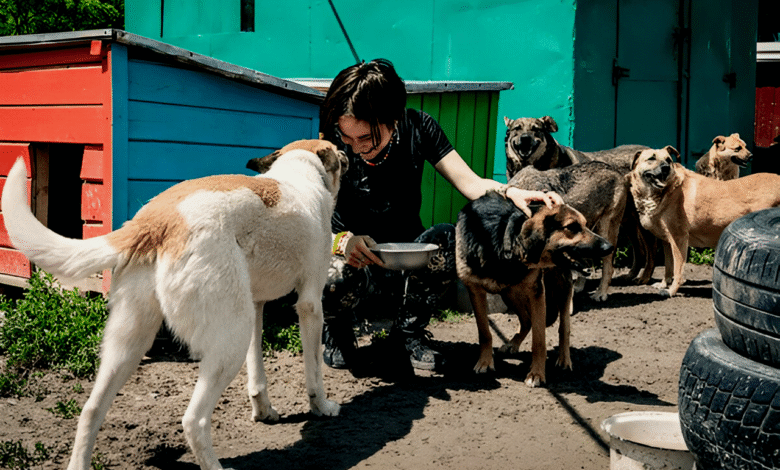
How to Get Involved in Animal Rescue and Adoption
How to Get Involved in Animal Rescue and Adoption Discover meaningful ways to help homeless animals through volunteering fostering donating or adopting Save lives today.
Animal rescue and adoption is a deeply rewarding way to make a meaningful difference in the lives of vulnerable animals. Every year, millions of dogs, cats, and other pets end up in shelters, many of them victims of abandonment, abuse, or neglect. By getting involved in rescue efforts, you can help provide these animals with a second chance at life. Whether through volunteering, fostering, donating, or adopting, there are countless ways to contribute each playing a vital role in reducing animal suffering and promoting compassionate care.
For those who love animals but may not know where to start, this guide offers practical steps to begin your journey in animal rescue and adoption. From understanding the basics of shelter operations to learning how to advocate for animal welfare, every effort counts. By taking action, you become part of a growing movement dedicated to creating safer, happier futures for animals in need. The impact of your involvement, no matter how small, can save lives and inspire others to join the cause.
How to Get Involved in Animal Rescue and Adoption
The Lifesaving Mission of Animal Rescue
Animal rescue organizations serve as first responders for vulnerable animals, intervening in cases of abuse, neglect, or abandonment. Rescuers provide critical medical treatment, rehabilitation, and temporary shelter while addressing both physical and emotional trauma. This vital work transforms suffering animals into adoptable companions through vaccinations, spay/neuter procedures, and behavioral training. Without these rescue efforts, countless animals would face euthanasia or continued suffering on the streets.
The Transformative Power of Adoption
Adoption completes the rescue journey by providing permanent, loving homes where animals can thrive. Unlike purchasing from breeders or pet stores, adoption gives a second chance to animals who have often overcome difficult circumstances. The adoption process carefully matches pets with suitable families, considering lifestyle factors and the animal’s unique needs. Each successful adoption not only saves a life but also creates space in shelters for another animal in need, creating a continuous cycle of compassion and care within the community.
Ways to Get Involved in Animal Rescue
Volunteering at Animal Shelters
One of the most direct ways to help is by volunteering at local animal shelters or rescue organizations. Shelters often need assistance with feeding, cleaning, socializing animals, and assisting with administrative tasks. Volunteering not only helps the shelter operate smoothly but also improves the animals’ quality of life by providing them with much-needed human interaction.
Fostering Animals in Need
Fostering is a temporary care system where individuals take rescued animals into their homes until they are adopted. This is especially helpful for shelters with limited space. Foster families provide a safe and loving environment, helping animals recover from trauma and preparing them for their forever homes.
Donating to Rescue Organizations
Financial contributions are always needed to cover medical expenses, food, and shelter maintenance. Even small donations can make a big difference. Additionally, donating supplies like blankets, toys, and pet food can help shelters operate more efficiently.
Adopting Instead of Shopping
Choosing to adopt a pet from a shelter rather than buying from a breeder or pet store helps reduce the demand for commercially Animal breeding. Adoption gives a homeless animal a loving home and frees up space in shelters for other animals in need.
Educating Others About Animal Welfare
Preventative Impact of Responsible Pet Ownership Advocacy
Educating communities about proper pet care creates generational change by addressing root causes of abandonment. Awareness campaigns should emphasize The lifelong commitment of pet ownership (10-15+ year responsibility). Financial requirements for proper veterinary care and nutrition. Time investment needed for training and socialization. Importance of identification (microchips/tags) to reduce lost pets. These efforts prevent surrender situations before they occur by setting realistic expectations.
Strategic Outreach Methods That Drive Change
Effective awareness initiatives utilize multiple channels Social media campaigns with shareable infographics and success stories. School programs teaching children empathy and proper animal care. Community partnerships with vet clinics, groomers and pet stores. Low-cost clinic promotions to increase spay/neuter accessibility. Multilingual resources ensuring information reaches all demographics. This comprehensive approach creates a cultural shift toward viewing pets as family members rather than disposable possessions.
Participating in Trap-Neuter-Return (TNR) Programs
For those interested in helping community cats, TNR programs are an effective way to control feral cat populations humanely. Volunteers trap stray cats, have them spayed or neutered, and return them to their colonies, preventing overpopulation.
Assisting in Emergency Animal Rescue
Natural disasters often leave animals stranded and in need of urgent help. Joining disaster response teams or supporting organizations that provide emergency rescue services can save lives during crises.
Advocating for Animal Rights
Supporting legislation that protects animals from cruelty and promotes humane treatment is another way to contribute. Writing to lawmakers, signing petitions, and supporting animal welfare organizations can drive positive change.
The Impact of Animal Rescue and Adoption
Creating a Culture of Compassion
Every animal rescued and adopted sets in motion a powerful chain reaction. When you choose to adopt, you’re not just saving one life – you’re making space in shelters for another animal in need. This act of kindness demonstrates to others the value of giving homeless pets a second chance. As more people witness successful adoptions in their communities, it gradually shifts societal attitudes away from buying pets and toward adoption. Your involvement, whether through fostering, volunteering, or sharing rescue stories on social media, helps normalize and promote this compassionate approach to pet ownership.
Strengthening Community Responsibility
Animal rescue efforts highlight our collective responsibility toward vulnerable creatures. When you volunteer at a shelter or participate in TNR programs, you’re contributing to systemic solutions for animal welfare issues. These small actions accumulate into significant change reduced euthanasia rates, better-funded shelters, and more robust spay/neuter initiatives. Your participation also encourages local businesses and officials to support animal welfare causes, creating a network of community support that extends far beyond individual efforts. This growing web of responsibility ensures that animal welfare remains a priority in your community for years to come.
Read More: Understanding Common Household Toxins and Their Effects on Pets
Conclusion
Getting involved in animal rescue and adoption is one of the most fulfilling ways to make a tangible difference in the lives of vulnerable creatures. Whether you choose to volunteer at a shelter, foster an animal in need, donate to rescue organizations, or open your home to adoption, every action contributes to a larger movement of compassion and change. The rewards extend far beyond helping individual animals you become part of a community dedicated to creating a more humane world, one life at a time.
As you embark on your journey in animal rescue and adoption, remember that even small efforts can have a profound impact. From socializing a shy shelter dog to advocating for animal welfare policies, your involvement helps shape a future where every pet has a loving home. By committing to this cause, you not only save lives but also inspire others to join the effort. Together, we can build a world where no animal is left behind, and every creature knows the safety and love they deserve.
FAQs
How can I start volunteering at an animal shelter?
Contact local shelters to inquire about volunteer opportunities and training requirements.
What are the benefits of fostering an animal?
Fostering helps socialize animals, frees up shelter space, and prepares pets for adoption.
Can I adopt if I have a busy schedule?
Yes but consider low-maintenance pets or discuss options with rescue organizations.
How do donations help animal rescues?
Donations fund medical care, food, shelter operations, and rescue missions.
What should I do if I find a stray animal?
Contact local animal control or a rescue organization for guidance on safe handling and next steps.







